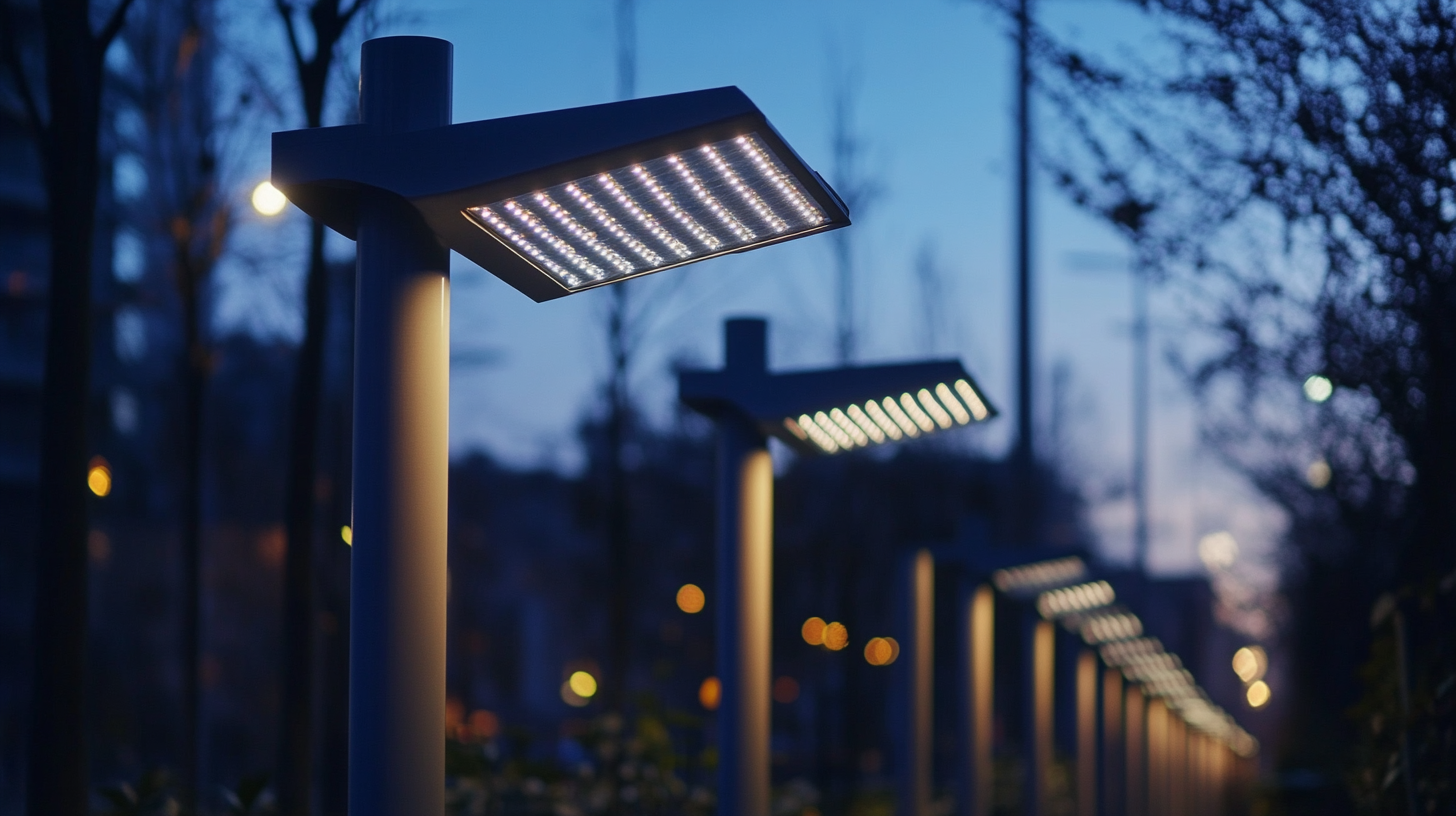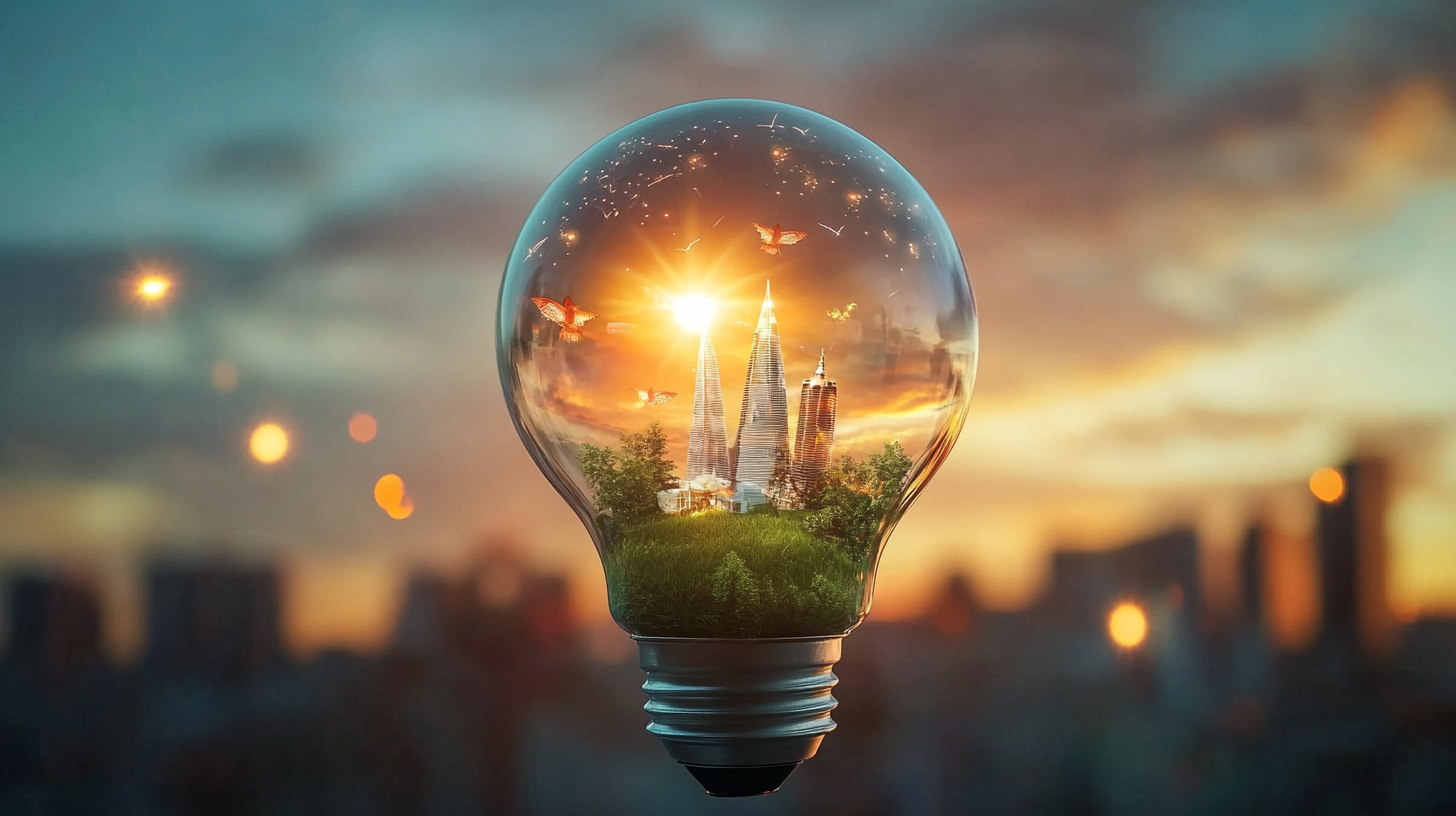Innovations in Sustainable Lighting Solutions for 2025 and Beyond
As we move onward into a future defined by sustainability, the lighting industry is undergoing innovations that transform equipment into something that can boost energy efficiency and minimize impact on the environment. The emergence of such a wonderful technology as **LED solar** is marked by joining the advantages of modern LED technologies with the renewable energy source of solar energy, which is an essential part of clean energy solution. In addition to these tremendous energy savings, it contributes to global efforts to combat climate change and further create a planet that is much healthier.
The bright future that **LED solar** lighting solutions promise has been conveyed to us, taking us through years beyond 2025 and ushering in an age where urban spaces and outside rural areas will thrive under sustainable practices. This blog post will speak about the paradigm-shifting advancements in lighting technology that will change the way we use light and some important advantages of marrying LED capabilities with solar energy. From better aesthetics to increased functionality, these changes lead us closer to a more sustainable and energy-efficient future.

Emerging Trends in Eco-Friendly Lighting Technologies
By 2025, sustainable lighting has increased demand driving trends of innovation in green technology. One of these new green trends has been smart lighting systems, which can improve energy efficiency and offer super connectivity to all kinds of environments. Such adaptable systems also use sensors combined with artificial intelligence to change lighting conditions, depending not only on natural light levels but also on occupancy and certain-user preferences. This would mostly lead toward great energy saving without much of hindering the user comfort. One of the newest trends is the evolution of organic light-emitting diodes (OLEDs). Basically in contrast with the former commercial lamps, the new product is made out of carbon-based materials and provides a diffused soft light to the room. It will also be manufactured on flexible substrates, giving a great room for creative design applications where light is blended within architecture. Moreover, the energy-efficient and longer lifespan options make OLEDs attractive alternatives to love those environmentally friendly items. Another trend is that of solar lights which is fast catching on as well, but particularly in the outside ring. Very cost-effective and very efficient, today these systems have an advanced photovoltaic technology. These systems consume green energy and therefore contribute to sustainability and, at the same time, de-emphasize reliance on a conventional grid. As innovations continue in this field, we shall also see the entry of these innovations into smart city designs illuminating streets and public spaces sustainably yet economically. These changes show on the one hand commitment to reducing one's carbon footprint but on the other they express the need for responsible lifestyle choices. The transformation is being experienced in the lighting industry as it gears up toward a future where solutions in the field do not remain the exception but become mainstream.

The Role of Smart Lighting Systems in Sustainability
Smart lighting systems are well on their way to revolutionizing sustainability in urban settings. A smart light system integrates myriad features of technologies for energy optimization, waste reduction, and a smarter lighting grid. It uses sensors, connectivity, and adaptive algorithms to establish smart lighting such that, in all seriousness, lighting conditions change with changing environments, and therefore, it uses energy resourcefully and improves the user experience.
Tops the list of the benefits that smart lighting systems offer is the enhancement of energy management through data analytics. A typical example of this would be using motion sensors to understand the activity levels in an area and adjusting brightness accordingly, whereby lights come on only when needed. This reduces wasted energy consumption that is up to 70% lower than that of traditional halogen lamps. While most systems enable the control of light schematics and settings from apps through smartphones, users and city planners will be able to have control over lighting schedules and settings based on real-time requirements.
Smart lighting is thus amenable to simultaneous integration with renewable energy sources, for instance, solar energy. The future will come closer to streetlights that capture solar energy while the sun shines. At night they will illuminate without relying on traditional electricity resources. Not only will this foster more clean energy use, but it will also pave the way towards converting urban infrastructure into a greener alternative, where smart lighting would further prove to offer better eco-friendliness in city planning.

Innovative Materials Driving the Future of Sustainable Lighting
The lighting industry is enjoying a huge shift with new materials that not only improve the aesthetics of illumination, but more importantly, supply a sustainability aspect. According to Fortune Business Insights, the global market for LED lighting is anticipated to surpass $130.4 billion by 2028, and continued efficiency-driven, innovation-led efforts into sustainability are expected to lay the groundwork for other materials such as organic light-emitting diodes (OLEDs) and green luminescent materials originating from organic sources.
Another great example is bioplastics for lighting fixtures. According to a study by the journal Green Chemistry, bioplastics reduce carbon footprints by 80% compared to conventional plastics. Modifying these materials such as adding a certain amount of polylactic acid (PLA) creates waste and is also relevant to a circular economy by encouraging recyclable designs. Such a revolution by introducing these materials actually marks a movement toward circularity within the lighting world that helps establish an ecosystem in which end-of-life products can easily recycle or biodegrade.
Energy progressive materials that will create light emission are indispensable for the future. Innovative predictions from the International Energy Agency assert the performance of lighting technology through nanomaterial applications to increase efficiency by 50% by 2025. Such advances and innovations such as quantum dots improve the color quality of lighting and make the energy efficiency more appealing, thus qualifying as desirable candidates in sustainable lighting applications. These are innovations that the industry is putting to good use, thereby harnessing the very exciting prospects of new materials for solutions that will meet not just consumer expectations but also sustainability goals globally.

Impact of Renewable Energy on Lighting Solutions
Lighting solutions, being powered by renewable energy, have come quite far, especially with 2025 just around the corner. With the world realizing the gravity of sustainable practices, the market has begun witnessing the shot-up presence of innovative lighting techs, meeting up with economic and environmental demands. Recent trends show that the global solar lighting market is poised for significantly progressive growth. The market is anticipated to grow at a CAGR of 5.9% from 2023 to 2033. Such growth signals the high demand for energy-efficient and sustainable lighting solutions through the solar system.
Apart from the energy-efficient appliances, for households, the use of good insulation material is yet another practical step toward avoiding energy consumption. Improved daily practices can lead to savings on electricity bills for the average family. Meanwhile, these small contributions go toward ensuring a cleaner environment. Such initiatives favor household budgets while alleviating a much more significant problem-conceptualizing energy waste-and hence developing a culture for sustainability.
Different stakeholders and approaches such as humanitarian efforts on solar energy deployment in communities that lack access to electricity substantiate that renewable energies help create an equitable solution. The impact of renewable energy on community resilience and economic empowerment in Sub-Saharan Africa through furthering women's entrepreneurship with off-grid power options and clean cooking solutions.
While thinking about these things, we also remember that the move towards carbon neutrality in the lighting industry is a significant milestone. The commitment to achieving carbon-neutral operations and cutting emissions from construction-an industry responsible for 37% of global carbon emissions-is a comprehensive step towards sustainable development. Innovation leading the way seems to make bright prospects forward for the future of lighting solutions, one towards the direction of a sustainable and energy-efficient planet.
Case Studies: Successful Implementation of Sustainable Lighting Projects
With sustainability becoming the trend of the day, many exemplary cases of innovative lighting solutions could teach us much about future urbanism. One example is the conversion of Los Angeles' street lighting into LED systems. This project saved about 63% of energy consumption and provided better public safety through enhanced visibility. With the help of smart technology, the city fitted sensors that adapt to the conditions at hand in real time, which optimally governed energy use while guaranteeing reliability in a light source for safe walking for pedestrians and driving for cars.
The next case comes from the Dutch city of Amsterdam, which has taken to the concept of 'smart lighting.' Here, solar-powered street lighting is coupled with sensors that adjust brightness levels according to pedestrian movement. Thus, remarkably reduced energy costs arise from lights dimming or switching off when there are no activities, all without compromising on safety. Besides, these streetlights can also collect environmental data and measure air quality, placing Amsterdam firmly at the front line of urban sustainability efforts.
These case studies emphasize that sustainable lighting solutions are not only people-friendly but also improve energy efficiency. The municipalities, therefore, are encouragingly assessing potential technologies for integration in such projects, which would change urban illumination into smart ones for smart cities in the forthcoming years.
